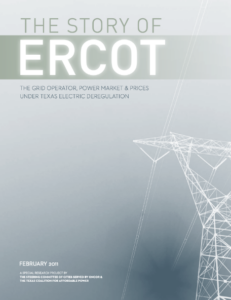ADERs are comprised are small generation resources that respond in aggregate to ERCOT demand response instructions.
________________________________________________
A pilot project to test the feasibility of aggregating distributed energy resources — that is, combining groups of premise-level power sources such as solar panels — has produced positive results.
That’s the word from an ERCOT official, who, speaking during a recent meeting of the Public Utility Law Section of the State Bar of Texas, has outlined ongoing developments pertaining to a pilot project on Aggregated Distributed Energy Resources (ADER). Other commenters included officials with Bandera Electric Cooperative and the Houston-based power generator NRG. The meeting was conducted on March 1.
ADERs: What are they?
ADERs typically are comprised are comparatively small generation resources located at multiple premises, such as a group of residential solar panels, and that are connected at the distribution level so that they can respond in the aggregate to ERCOT demand response programs. When ERCOT energy reserves are low, Retail Electric Providers (REPs) discharge ADERs, and the individual distributed energy resource owners that collectively form the ADER then receive revenue. As distributed energy technologies such as residential solar and batteries proliferate, ADERs should provide ERCOT an additional reliability tool—and retail consumers an additional cost savings method. The program, however, remains in its infancy.
The ERCOT representative speaking during the March 1 meeting noted that the ADER pilot project limits the capacity of eligible distributed energy resource devices to 1 megawatt or less. Overall, the entire ADER pilot is limited to 80 megawatts. He said the organization has found the pilot results encouraging, and officials there hope to expand project eligibility soon.
Separately, the Bandera representative described the positive feedback the cooperative received from its customers who participated in the pilot. The NRG representative reviewed efforts by its affiliate Reliant Energy to enroll customers in the ADER pilot project. At this stage, Reliant is focused on customer compensation levels necessary to incentivize ADER participation, according to the NRG official.
Two take-away conclusions from the meeting were that ADERs show promise as a developing technology, and that they may soon provide municipalities with valuable cost-saving programs. Moreover, assuming the pilot project is successful, a municipality should soon be eligible to receive revenue for energy produced through solar panels or batteries installed on municipal property. As such, it may be prudent for city officials to contact their municipal REP to discuss ADER pilot project eligibility.
More information about the pilot project can be found in PUC Project No. 53911.


